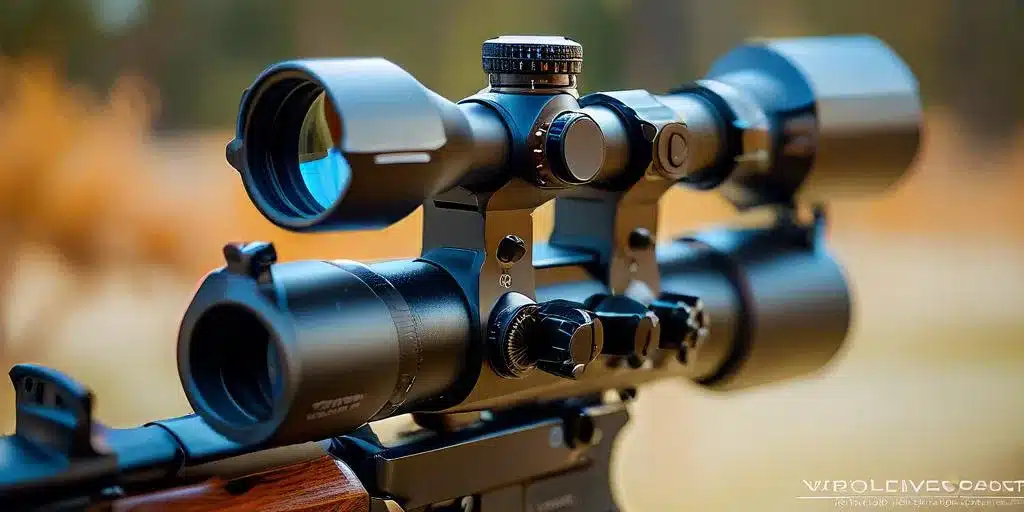Table of Contents
When it comes to mounting optics on your rifle, choosing the right scope mount is crucial for performance, accuracy, and ease of use. Among the many mounting options available, the cantilever scope mount stands out for its versatility and functionality. But do you really need a cantilever scope mount for your setup? This article will break down what a cantilever mount is, its advantages, and when it makes sense to use one. If you own a rifle like the Ruger Mini 14, you might also want to consider accessories such as a mini 14 picatinny rail, which can complement your scope mounting setup.
What Is a Cantilever Scope Mount?
A cantilever scope mount is a type of mounting system designed to extend the position of your optic forward over the rifle’s receiver. Unlike traditional mounts that attach directly above the base or rail, cantilever mounts reach forward, allowing for more flexibility in positioning the scope. This forward extension is particularly useful for rifles where eye relief and positioning options are limited.
Cantilever mounts are typically designed for use with Picatinny or Weaver rails, providing a sturdy and repeatable mounting platform. They usually come as one solid piece or two rings connected by a solid bar, ensuring strength and stability.
Advantages of a Cantilever Mount
1. Increased Eye Relief Adjustment
One of the biggest benefits of a cantilever mount is its ability to give you greater eye relief adjustment. By extending the scope forward, you can set your eye relief more comfortably without being forced into awkward shooting positions. This is especially helpful for rifles with shorter receivers or compact designs.
2. Better Clearance for Other Accessories
A cantilever mount raises the scope and moves it forward, which can free up space on the rifle for additional attachments like backup iron sights, lights, or lasers. If your rifle features a mini 14 picatinny rail, a cantilever mount can help maximize the usable rail space, allowing you to fit both your optic and other gear without crowding.
3. Simplifies Mounting on Short Rails
Sometimes, rifles come with shorter rail sections, limiting where you can place your scope. A cantilever mount compensates for this by extending the scope forward, enabling the proper eye relief positioning even if the rail is short. This is common in tactical rifles, carbines, and some hunting rifles.
4. Improves Shooting Comfort
A properly positioned optic reduces neck strain and allows a more natural shooting stance. The extended length of a cantilever mount can contribute to a more comfortable cheek weld and better overall shooting experience.
When Should You Choose a Cantilever Mount?
Not every rifle or scope setup requires a cantilever mount. Here are some scenarios where a cantilever mount is particularly beneficial:
Rifles with Limited Rail Space
If your rifle has a short Picatinny or Weaver rail, a cantilever mount is often the best choice. It ensures that you have enough forward movement to achieve proper eye relief without sacrificing stability or mounting options.
Tactical and AR-style Rifles
Many AR-style rifles use cantilever mounts because they allow the optic to be positioned farther forward, which is essential for comfortable shooting. If you are setting up a tactical or modular rifle, a cantilever mount is often the standard choice.
When Using Backup Iron Sights
If you want to mount backup iron sights behind your optic, a cantilever mount raises and pushes the scope forward, leaving room for the irons. This setup is popular with shooters who want redundancy without having to remove their primary optic.
Rifles with Forward-Mounted Optics
Certain hunting and precision rifles require optics to be mounted farther forward to accommodate specific shooting styles or stock designs. Cantilever mounts allow this customization.
When Might a Cantilever Mount Not Be Necessary?
If you have a rifle with a long enough rail or base, a traditional direct-mount ring system might be sufficient. For example, bolt-action rifles with long top rails or custom mounts may not require the extra forward extension. Similarly, if your scope already has adjustable eye relief and your shooting style is compatible with a standard mount, a cantilever mount might add unnecessary complexity or weight.
Materials and Build Quality
Cantilever mounts come in a variety of materials, but most serious shooters prefer aircraft-grade aluminum for its strength-to-weight ratio. High-quality mounts are usually CNC-machined for precise fit and finish. Look for mounts with secure locking mechanisms to avoid any shifting under recoil.
Installation Tips
Installing a cantilever scope mount generally requires aligning the mount on your rail and securing it firmly. Be sure to torque the screws to the manufacturer’s specifications to avoid damage or loosening during use. Proper alignment ensures your scope stays zeroed and functions accurately.
For more helpful blog posts like this one, visit the rest of our site, My USA Wire.
Final Thoughts
If you’re setting up a rifle that has limited rail space, or you want the flexibility to adjust eye relief for comfort and performance, a cantilever scope mount is an excellent investment. It provides greater versatility, more room for accessories, and an improved shooting experience.
For rifles like the Mini 14, combining a quality mini 14 picatinny rail with a cantilever mount can unlock the full potential of your optic setup, ensuring precision and ease of use.
By understanding your rifle’s needs and how you plan to use it, you can decide if a cantilever scope mount is the right choice for your shooting setup.


